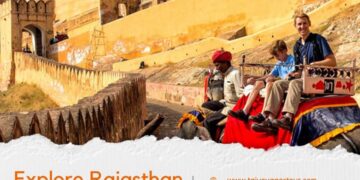Introduction to Trekking Expedition Adventures
A Trekking Expedition is more than just a walk in nature. It’s a deep physical and mental journey into remote landscapes where roads end and trails begin. Unlike short hikes, a trekking expedition usually lasts several days or even weeks, covering rugged terrains, high altitudes, and demanding environments. Whether you’re crossing Himalayan passes, navigating dense forests, or scaling rocky hills, this activity brings you closer to nature in the rawest form.
In this guide, we’ll walk through all the essential aspects of a trekking expedition—from preparation to execution—so that you can embark on your next adventure confidently and safely.
Key Elements That Define a Trekking Expedition
A Trekking Expedition differs from a day hike in several ways. These are the defining characteristics:
1. Duration
Trekking expeditions typically last more than a few days. Some popular expeditions extend over weeks, requiring sustained stamina and planning.
2. Terrain
Expect varied landscapes—mountains, valleys, rivers, glaciers, and alpine meadows. Trekking terrain is often unpaved, steep, and physically demanding.
3. Remote Access
Treks take you to areas inaccessible by vehicles. Supplies and support must be carried or arranged through porters or pack animals.
4. Overnight Stays
You’ll often stay in tents, homestays, or basic lodges. The absence of luxury means you rely on essentials for survival and comfort.
Choosing the Right Trekking Expedition Destination
Picking the perfect Trekking Expedition depends on your experience level, fitness, and what kind of environment excites you. Here are some options based on difficulty and geography:
Beginner-Level Treks
Ideal for newcomers or those with moderate fitness.
- Triund Trek (India)
- Inca Trail (Peru)
- Laugavegur Trail (Iceland)
Intermediate Treks
Requires some prior trekking experience.
- Hampta Pass (India)
- Annapurna Base Camp (Nepal)
- Mount Rinjani (Indonesia)
Advanced Expeditions
Challenging terrains and longer durations.
- Everest Base Camp (Nepal)
- Snowman Trek (Bhutan)
- Patagonia Trek (Chile & Argentina)
Each location offers a unique blend of climate, landscape, and cultural interaction. Research weather patterns, permit requirements, and travel advisories before choosing.
Physical and Mental Preparation
A Trekking Expedition is physically demanding. Start training at least two months in advance. Here’s how to get ready:
Cardiovascular Fitness
Running, swimming, or cycling for 30–45 minutes at least five days a week will improve your stamina.
Strength Training
Focus on leg strength (squats, lunges), core stability (planks, sit-ups), and back endurance to carry your backpack.
Altitude Acclimatization
If your trek involves high elevations, simulate altitude conditions through stair climbing or hiking at nearby hills.
Mental Resilience
Expect long, tiring days, unpredictable weather, and limited comfort. Building a mindset to adapt to these challenges is crucial.
Essential Gear for Any Trekking Expedition
Packing light yet smart can make or break your trekking experience. Your gear should match the region, weather, and duration.
Clothing
- Base layers (moisture-wicking)
- Insulated jacket
- Waterproof outer shell
- Trekking pants
- Wool socks
- Gloves and hat
Footwear
- Broken-in trekking boots with ankle support
- Lightweight sandals for campsites
Essentials
- Trekking poles
- Sleeping bag (according to temperature)
- Headlamp
- First-aid kit
- Hydration system or water bottles
- Portable stove and fuel
- Lightweight cooking gear
Documents and Safety
- Permits and IDs
- Maps or GPS device
- Emergency contacts
- Satellite phone (for remote treks)
Invest in high-quality, lightweight gear that doesn’t compromise comfort or safety.
Importance of Route Planning
Every Trekking Expedition requires solid planning. While spontaneity may work in urban trips, treks need preparation.
Study the Route
Understand the number of trekking days, altitude gain, weather challenges, water points, and shelter availability.
Create an Itinerary
Set daily distance targets. Account for acclimatization days if trekking at high altitudes.
Backup Plans
Prepare for contingencies like bad weather, injury, or route blockages. Keep a buffer of 2–3 days in your schedule.
Food and Hydration Strategy
On long treks, what you eat and drink affects performance and morale.
Food
Pack high-calorie, lightweight, and non-perishable foods like:
- Trail mix, nuts, and dried fruits
- Instant noodles and soups
- Energy bars
- Freeze-dried meals
Avoid alcohol or junk food. Keep small snacks handy to refuel during the hike.
Hydration
Carry a minimum of 2 liters of water. Use purification tablets or a filter to refill from streams. Dehydration at altitude can cause serious health issues, so drink regularly.
Understanding Altitude Sickness and Trekking Safety
One of the biggest risks in a Trekking Expedition is altitude sickness. It can affect anyone, regardless of fitness level.
Symptoms
- Headache
- Nausea
- Dizziness
- Loss of appetite
- Breathlessness
Prevention
- Ascend gradually
- Stay hydrated
- Avoid alcohol
- Take acclimatization breaks
- Use medications like acetazolamide (after consulting a doctor)
Emergency Response
Always know the nearest evacuation route and have access to emergency contact numbers. If symptoms worsen, descend immediately.
Environmental and Cultural Responsibility
A Trekking Expedition is also a test of your ethics. Respect the trail and the people who live along it.
Leave No Trace
- Carry back all waste
- Avoid single-use plastics
- Camp only in designated areas
- Don’t disturb wildlife
Respect Local Culture
- Dress modestly
- Ask permission before taking photographs
- Learn a few local phrases
- Follow local customs
Supporting local guides, homestays, and businesses adds value to the community and enriches your own experience.
Benefits of Going with Guided Trekking Expeditions
If you’re new to trekking or entering high-risk areas, guided expeditions offer:
- Professional route planning
- Trained guides and porters
- Arranged accommodations
- Emergency support
- Local insight and knowledge
Guided treks can cost more but provide higher safety and comfort levels, especially in foreign countries.
Common Challenges in a Trekking Expedition
Trekking is rewarding, but it’s not always smooth. Be prepared to face:
Weather Uncertainty
Conditions can change in hours—carry waterproof gear and check forecasts daily.
Fatigue
Pace yourself and take breaks. Overexertion increases the risk of injury and illness.
Blisters and Injuries
Use blister tape, proper socks, and keep a basic medical kit handy.
Communication
In remote areas, phone signals might be nonexistent. Use satellite messengers or pre-plan check-ins.
Trekking Expedition Packing Checklist (Summary)
Here’s a quick checklist to help you pack smart:
- Sturdy backpack (40–60L)
- Trekking boots and socks
- Waterproof clothing layers
- Sleeping bag and tent (if needed)
- Food and cooking supplies
- Water bottles and purification
- Maps or GPS device
- Personal medication and first-aid
- Identification and permits
- Trekking poles
- Headlamp and spare batteries
Post-Trek Recovery and Reflection
After a Trekking Expedition, recovery is just as important as the trek itself. Your body needs rest, and your mind needs space to absorb the journey.
Rest and Rehydrate
Give yourself at least a day or two to rest and eat nourishing food. Treat any injuries or sore muscles.
Reflect and Share
Write down your thoughts. What did the experience teach you? What can you improve on next time? Share your journey with friends or a trekking community online.
Final Thoughts on Planning Your Trekking Expedition
A Trekking Expedition is not just about reaching a destination. It’s about learning your limits, understanding nature, and growing from the experience. Whether you’re a solo traveler or joining a group, the lessons you gather on the trail last a lifetime.
Preparation, respect for the environment, and resilience will ensure that your trekking expedition remains one of the most fulfilling adventures you’ll ever undertake.



















